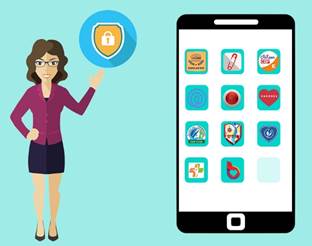Travelers often experience frustration when their
favorite apps suddenly become unavailable after crossing borders. Many users
discover solutions like installing GBox Huawei, which helps access desired apps
when standard methods fail in restricted regions. Geo-blocking, licensing
agreements, and local regulations create a fragmented app landscape that varies
by country. Banking apps may stop functioning for security reasons, while
streaming services change their content libraries based on your location. In this
article, we'll explore practical strategies to maintain access to essential
apps while traveling and safely discover new local applications abroad.

1. Regional Restrictions
& Workarounds
How Geo-Blocking Affects
Popular Apps
Geo-restrictions impact various app categories
differently. Streaming services like Netflix alter their content libraries
based on your physical location due to licensing agreements. Banking apps often
block access from foreign IP addresses as a security precaution against fraud.
Ride-hailing and food delivery apps typically require local versions with
different features and payment options. Some news and social media apps modify
their content or functionality to comply with local regulations. Even productivity
tools like cloud storage services may limit features when accessed from certain
countries.
Using VPNs to Access Home
Country App Stores
Virtual Private Networks (VPNs) remain the most
effective tool for temporarily bypassing geo-restrictions. A quality VPN
service allows you to appear as if you're connecting from your home country,
maintaining access to familiar apps. For best results, configure your VPN
before traveling and test it with your essential applications. Choose VPN
servers in your home country's major cities for optimal performance with app
stores. Some apps employ sophisticated detection methods, so you may need to
experiment with different VPN protocols if connections fail.
2. Payment Method
Challenges
International app downloads often encounter payment
obstacles when your credit card's country doesn't match the app store's region.
Many app stores require payment methods issued in the same country as your
account profile. Some travelers solve this by purchasing local prepaid cards or
using international payment services that support multiple currencies. Digital
wallets and cryptocurrency options sometimes provide alternative payment
pathways for tech-savvy users. For subscription services, consider prepaying
before travel or switching to annual billing to avoid mid-trip payment issues.

3. Language &
Localization Issues
Navigating foreign app stores presents language
barriers that go beyond simple translation challenges. App interfaces may
display in the local language by default, with English versions buried in
settings menus. Search functionality often works best when using the local
language for app names and keywords. Some apps change their fundamental design
and features for different regional markets, creating confusion for travelers.
Cultural differences affect app organization too - categories that appear prominent
in one country's store might be obscure in another.
4. Security & Privacy
Concerns
Downloading apps in unfamiliar environments
requires heightened security awareness. Avoid using public WiFi networks for
app downloads without VPN protection, as these are prime targets for data
interception. Stick to official app stores rather than third-party markets that
may distribute modified or malicious versions. Be extra cautious about
permission requests from new apps - foreign applications may follow different
privacy standards than you're accustomed to. Some countries have surveillance
laws that affect how apps handle user data, particularly for messaging and
social media platforms. Consider creating a separate travel account or profile
on your device for installing local apps, keeping them isolated from your
primary data.
5. Data Roaming & WiFi
Considerations
Avoiding Massive App
Downloads on Hotel WiFi
Hotel WiFi networks often provide slow, unreliable
connections that struggle with large app downloads. These networks may also
impose data caps or charge exorbitant fees for excessive usage. Before
traveling, update all essential apps and download offline content like maps,
translation databases, and entertainment. For unavoidable large downloads, seek
out coworking spaces or local cafes known for reliable WiFi instead of relying
on hotel connections. Some travelers purchase local SIM cards specifically for
app downloads before switching back to their primary SIM for daily use.
Setting App Updates to
"WiFi Only" Mode
Prevent unexpected data charges by configuring your
device to only update apps when connected to WiFi. This setting typically lives
in your app store's network preferences menu. Consider disabling auto-updates
entirely while traveling and manually updating apps when you have reliable
connections. Some apps allow you to download updates but delay installation
until later - useful when you need to conserve battery or data. For critical
security updates, create a list of must-update apps and handle these first when
you find good WiFi. Travelers who frequently change locations should develop a
routine of checking for updates during breakfast or other stable periods when
connected to trusted networks.
6. Essential Travel Apps to
Download First
Building a foundation of reliable travel apps
before departure prevents frantic searching abroad. Navigation apps with
offline maps like Google Maps (download your destination areas in advance)
prove indispensable in unfamiliar cities. Language translation apps that work
offline can rescue you in areas with poor connectivity. Currency conversion
tools help avoid confusion when making in-app purchases with unfamiliar money.
Local transportation apps often require country-specific versions that you'll
want to install immediately upon arrival. VPN services should be installed and
tested before you need them, as some countries restrict VPN download access.
7. Returning Home – App
Transition Tips
The app challenges don't end when your plane lands
back home. Some apps may continue behaving as if you're abroad until you
manually reset them. Streaming services might show foreign content libraries
until you disconnect from any VPNs and refresh the app. Banking and financial
apps may still show security warnings until they detect your familiar home
network patterns. Take time to review and uninstall any temporary local apps
you no longer need, being careful not to remove those that might be useful for
future trips. Check for updates to all your standard apps that may have been
paused during travel. Some travelers create checklists of their normal app
settings to streamline the post-trip restoration process.
Conclusion
International app access requires preparation and
flexibility. Solutions like install gbox huawei demonstrate how technology adapts to overcome regional
limitations, though legal alternatives should always be prioritized. The most
successful travelers combine planning with on-the-ground adaptability,
maintaining access to essential services while safely exploring local app
options. By understanding geo-restrictions, securing your data, and managing
downloads wisely, you can maintain digital continuity across borders.



